The following by James Negus, was first published in “Gibbons Stamp Monthly” (August, 1956).
* * *
In G.S.M. for January, 1956, Mr. Basil Drennan made a heroic attempt at listing recent issues trom North Korea and this prompts me to do the same thing for another difficult country – Outer Mongolia. However, whereas Mr. Drennan was able to display some acute detective work on actual stamps, the student of Mongolia is at once faced with the difficulty that specimens of the issues made since 1945 seem virtually unobtainable.
Why this should be so is unknown. It is true that Mongolia is behind the Iron Curtain and has no trade or contact with the West, but the issues of other Communist states are freely available and some administrations go out of their way to cater for the collector. Not so Mongolia…
Enquiries for the stamps direct to its capital, Ulan-bator, seem to evoke a uniformly nil response. Enquiries of the Soviet philatelic agency in Moscow receive the courteous but unhelpful reply that one should write to the Ministry of Communications of the Mongolian People’s Republic, Ulan-bator, which is precisely where we came in.
I have tried writing to people in East European countries in the hope that these stamps might be circulating freely there as members of the Communist bloc, but without success. I have numbers of friends acutely interested in being able to find specimens – let alone list them – and between us we have battered at the doors of every source liable to produce any of the stamps. We have found a few, but there is still the problem of producing a list for stamps which have not been ieen and handled. The same problem besets the catalogue compilers, which is the reason why, after ten years, these stamps remain uncatalogned.
With patience, however, some progress can he made. It is perhaps superfluous toadd the customary hope that if any reader has further information he will kindly come forward and put us all out of our misery.
What Stamps have been Issued?
The first essential is to draw up an accurate list of what stamps have in fact been issued. But for an extraordinarily fortunate occurrence, which will be recounted later, this would have proved rather difficult. The philatelic press has had fragmentary reports of new issues but it is evident that, on the whole, the editors of the respective journals have had no idea when or for what reason the stamps have been issued. They have simply reported what has come to hand.
There is consequently overlapping between the accounts but, more serious, the reports in the only English source (Stamp Collecting) contain some mistakes which misled me into supposing that more stamps existed than I could account for. I find that the information in Stamp Collecting was based mainly on reports in the East German periodical Sammler-Express. The German magazine is not unimpeachable either, in my view, but has till now given the fullest information.
So that other interested students can check the conclusions reached in the present article I give a list of references at the end and include what seem to me to be errors.
I had been working on this new issue problem for about a year, without making much headway, when I had the good fortune to track down two covers which between them bore no less than twenty-five of these stamps! One of the very rare English visitors to Outer Mongolia was Mr. Ivor Montagu, who made a trip in 1954 on behalf of the British Peace Committee. Mr. Montagu, while in Ulan-bator, had gone into the Post Office and bought a copy of every stamp on sale; these he shared between two covers which he posted to a colleague in England, Dr. G. M. Vevers of Whipsnede. Dr. Vevers is a philatelist of many years standing and was kind enough to allow me to inspect the covers and describe them in the Press last year (see reference L). This meant that twenty-five of the stamps were thus made available for accurate description, and while the present scarcity of the recent issues of Mongolia persists, such a record is invaluable.
Words frequently found on Mongolian stamps and their translation.
By combining the press reports with data from the specimens which have come to light on the Vevers covers and elsewhere, it is possible to account for the existence of forty-two stamps issued since 1945, the date of the last catalogue entry (S.G. 56). These are given in the checklist.
Division into Sets
The next problem is to make up sets and here detective work is the only method. On the face of it, Mongolia seems to have a propensity for duplicating values in the set. That for the anniversary of the death of Marshal Choibalsan, for example, contains no less than three 20 mung values. Another difficulty is to recognize exactly what is depicted on the stamp, since the explanatory captions mean very little, at least to me.
It should be interpolated here that since 1946 the Mongols have officially abandoned the vertical script which is to he found on pre-1945 issues and have changed over to writing in an alphabet closely related to the Russian. This is a great help to us for transliteration purposes, but does not shed much light in other ways. In No. 26 for example, the two words on either side of the figure of value (foot of the stamp) transliterate to Mongol shuudan, which means “Mongol postage”, but I have no idea what the words at the top of the stamp mean when spelled out in latin characters.
The currency unit of Outer Mongolia is the tughrik, which is spelled as shown in the accompanying diagram. The tughrik is divided into 100 mungge; as with Russian. there is no universally accepted system of transliterating the Mongol language into latin characters, so that mungge is often written simply mung.
These questions of language are important because they give a faint clue to the order of appearance of the stamps. The last catalogued stamp is a single commemorative depicting Marshal Choibalsan, said to have been issued in 1945; it is chronicled in Stamps (New York) for July 21st, 1945. Observe the spelling of shuudan (postage), with an accent over the second letter.
Above: Mongolia 1943 set. Numbers 1-8.
The set which I have numbered 1- 8 also has this spelling, whereas every other stamp listed doubles the second letter instead to achieve the same effect. This detail at once groups these stamps as a set and indicates that they appeared before all the others and at a time when the use of the accented letter was correct, i.e. about 1945. Since the next set appeared in 1946, this set of eight was evidently issued in the latter half of 1945 or the beginning of 1946. Four of the values were not recorded until May, 1948 (ref. A), and another, the camel caravan of No. 4, till 1955 (ref. H), but such delays are not unusual from isolated and reticent Mongolia. Three values, Nos. 2, 3 and 5, are known on a cover from Ulan-bator dated 25.2.49. Not one was available at Ulan-bator Post Office in September, 1954, since they do not appear on the Vevers covers.
Further evidence that Nos. 1-8 form a set is that their elaborate artistic styie is the same, they were all printed by typography (in contrast to the prevailing photogravure of most of the other stamps), and they have a distinctive network background. These stamps have the hallmarks of definitives; it is reasonable to suppose that the authorities felt the time had come to replace the previous definitive set of 1932, which had done good service for about fourteen years. Furthermore, the old stamps contained the obsolete script and, interestingly enough, English inscriptions. The latter may have been thought inexpedient owing to changed political conditions. The date for the change-over to the new alphabet was January 1st, 1946, and I am inclined to think that this set of eight was put on sale about then as part of the official plans.



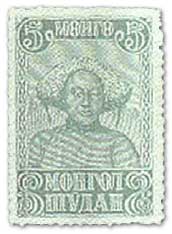

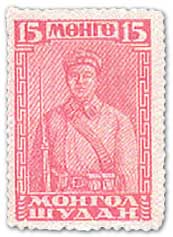


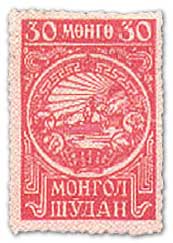
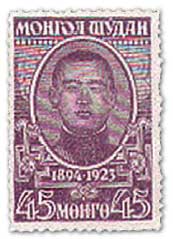
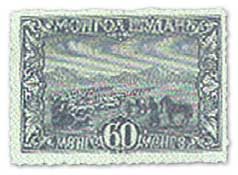








i was wondering how much some of the rare mongolia stamps are worth. I have
two of them.
[…] Mongolian stamps […]
Learned something on Mongolian philately. I have around more than 20 pcs used stamp from Mongolia, which I’d bought from a store. seems issued in the 1980’s. Can you send me fliers or back issues of any philtelic newsletters on Mongolian philately. This is my mailing address: Pilpinosas Subd., San Vicente, Panabo City, Davao del Norte, Philippines. Thank you very much. Godbless!…Ricardo C. Guarde
I do not have a facebook. Anyway, Thanks a lot for attending my inquiry.
I have come across hundreds of stamps from an elderly woman who passed away, beautiful mongolian of every sort and most of these stamps are so old
Hello, i think that i saw you visited my site so i came to “return the favor”.
I’m trying to find things to enhance my web site!I suppose its ok to use a few of your ideas!!
Spot on with this write-up, I seriously think this web site needs a lot more attention.
I’ll probably be returning to see more, thanks for the info!